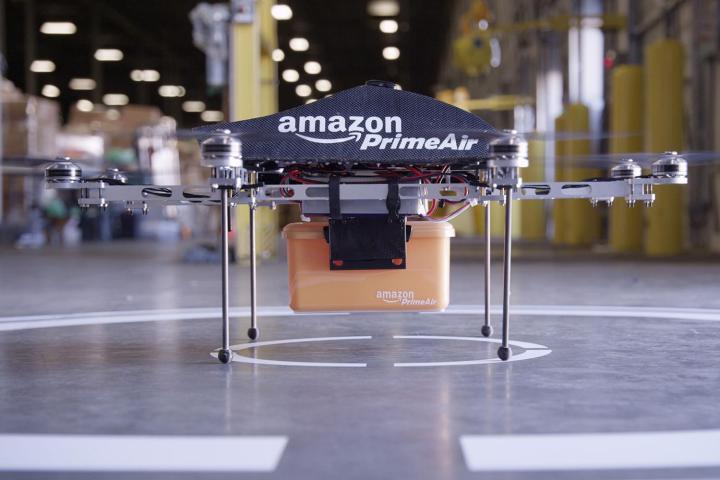
When Amazon boss Jeff Bezos announced last December he was moving ahead with plans to use drones for delivering packages to customers, many observers dismissed his idea as a cheap publicity stunt.
Despite the fact that he already had a prototype to show off, as well as a video showing how the service might work, it seemed to many that unveiling the proposed service the day before Cyber Monday was merely an attempt to get Amazon’s name in the headlines during a critical period for e-tailers, and that talk of the idea would simply fade away over time.
In a recent letter to shareholders, however, Bezos makes it clear that not only is there a team of engineers currently working on developing the ‘Prime Air’ delivery drone, but that it’s actually been very busy indeed.
Besides safety concerns, Amazon will have to find a way of building a relatively quiet flying machine.
Amazon’s plan is to build a machine capable of delivering packages of up to five pounds to addresses within 10 miles of its US fulfillment centers, though even if the engineers design a machine capable of doing this, Bezos is well aware there are other obstacles to overcome before the service has any chance of getting off the ground “in four or five years.”
“The hardest challenge in making this happen is going to be demonstrating this to the standards of the FAA (Federal Aviation Administration) that this is a safe thing to do,” Bezos said in a 60 Minutes interview last year when he first pulled the wraps off the idea.
Besides safety concerns, Amazon will have to find a way of building a relatively quiet flying machine, for those living close to its fulfillment centers won’t take too kindly to having their peace shattered by an army of noisy drones passing overhead, no matter what time of day.
And as for those promising to blast the Web giant’s octocopters out of the sky if they see one – like this guy in Colorado who said he won’t hesitate to shoot one down if has a chance and will happily “go to jail with a smile over my face” – it’ll surely take more than a few Amazon vouchers and a free Prime subscription to placate them.
There’s clearly some way to go for Amazon’s Prime Air project, but according to Bezos’s recent letter to shareholders, the idea really does appear to be moving closer to becoming a reality.
(Rendering courtesy of Mestaty via sketchfab.com)


